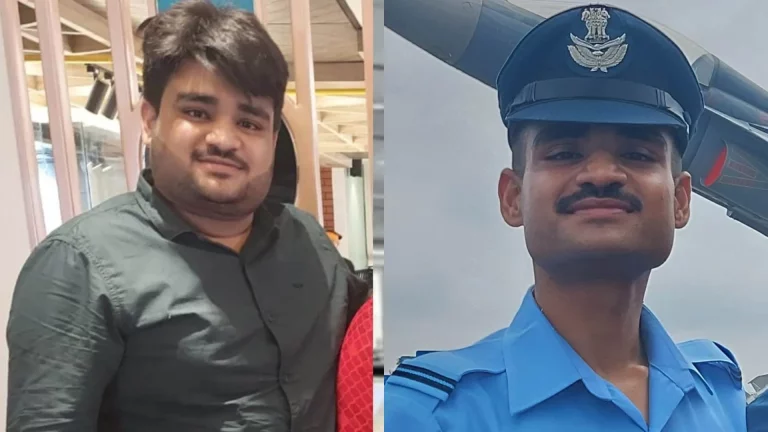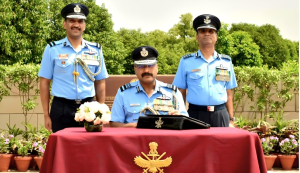Aerial dogfights are the most intense and high-stakes aspect of modern air combat. They require unmatched skill, quick decision-making, and seamless coordination between man and machine. Indian Air Force (IAF) fighter pilots are known for their competence in aerial combat, often excelling in global exercises with top air forces like those of the U.S., France, and Russia.
But how do Indian fighter pilots train for such high-pressure scenarios? This article explores How Do Indian Fighter Pilots Train for Aerial Dogfights?
1. Selection and Initial Training
The journey of becoming an IAF fighter pilot begins long before a pilot engages in dogfight training. Aspiring pilots undergo a stringent selection process that tests their physical endurance, psychological resilience, intelligence, and aptitude for flying.
Initial Flight Training
After clearing the NDA, CDS or AFCAT and the demanding SSB interview, candidates are enrolled in the Air Force Academy (AFA). Here, they receive foundational training in flying, using basic trainers like the Pilatus PC-7 Mk II. Trainees master the basic principles of flight, navigation, and aerodynamics. Only the top-performing cadets from this pool are chosen to progress toward fighter pilot training.
Also Read | IAF’s Chennai Air Show: A High-Flying Spectacle You Can’t Miss
2. Intermediate Jet Training
Once selected for fighter pilot roles, cadets move on to the Intermediate Jet Trainer (IJT) stage. This phase involves more advanced flying techniques, including:
- High-speed flight
- Advanced maneuvers
- Basic aerobatics
- Formation flying
This training is usually conducted on aircraft like the HJT-36 Sitara or similar intermediate jets. The focus here is to transition from basic piloting skills to advanced jet handling, preparing the pilot for combat aircraft.
3. Advanced Fighter Training
Upon completing IJT, cadets move to advanced fighter jets such as the BAE Hawk 132. This stage, called Advanced Fighter Training, is where the fundamentals of aerial combat are introduced. Here, fighter pilots learn:
- Combat maneuvers
- High-G force tolerance
- Basic air-to-air and air-to-ground attack techniques
Pilots are drilled in dogfight maneuvers through theoretical and practical lessons. The goal is to develop muscle memory for the aggressive, instinctive moves required in a real dogfight. Additionally, the pilots are introduced to radar tracking, target acquisition, and weapons employment.
4. Simulated Combat Environments
A critical component of dogfight training is simulated combat, which includes virtual reality (VR), simulators, and adversary training programs.
Flight Simulators
Simulators are highly advanced machines that replicate the exact cockpit environment of modern fighter jets, such as the Sukhoi Su-30MKI, Rafale, Tejas, and Mirage 2000. These simulators mimic real-world combat scenarios, enabling pilots to:
- Engage in mock dogfights
- Execute evasive maneuvers
- Practice shooting down enemy aircraft with missiles and guns
- Handle emergencies like engine failure or missile alerts
The advantage of simulators is that they allow pilots to face a wide variety of enemy tactics, weather conditions, and engagement scenarios without the risks or costs of actual flying.
Adversary Training Programs
In adversary training, pilots are pitted against fellow IAF pilots who act as the “enemy.” These engagements provide a real-world experience where both sides practice different combat strategies. India has dedicated squadrons whose sole role is to act as “aggressors” in these scenarios. They simulate enemy aircraft tactics, helping pilots practice against a wide range of threats.
Also Read | AFCAT 1 2025 Notification and Exam Date
5. Dissimilar Air Combat Training (DACT)
One of the most vital aspects of preparing for aerial dogfights is Dissimilar Air Combat Training (DACT), which involves training against aircraft of different types and capabilities. In a real-world dogfight, the enemy may fly aircraft with entirely different performance characteristics. For example, IAF pilots often fly the Sukhoi Su-30MKI in training exercises against Mirage 2000s or Tejas aircraft.
DACT is crucial for learning how to exploit the strengths of one’s own aircraft while exploiting the weaknesses of the enemy’s. It also helps develop a pilot’s ability to recognize enemy patterns, analyze the opponent’s tactics, and decide the best course of action in a dogfight.
6. International Joint Exercises
The IAF regularly participates in international joint exercises with air forces from around the world, including the U.S., France, Russia, and Israel. These exercises, such as Exercise Red Flag (USA), Garuda (France), Indra (Russia), and Cope India (USA), offer IAF pilots the opportunity to train in large-scale combat operations and dogfight scenarios against different air forces.
In these exercises, Indian pilots gain exposure to NATO and Western tactics, and they often come out as formidable opponents. For instance, in Red Flag and Cope India exercises, Indian Su-30MKI pilots have performed exceptionally well, even against technologically superior F-15 and F-16 aircraft.
7. Weapons Training
Effective dogfighting also requires exceptional skill in weapons handling. Fighter pilots train extensively to employ air-to-air missiles (AAMs) like the Astra and R-73, and guns for close-range combat. This training involves:
- Missile lock and shoot simulations
- Gunnery practice using fixed targets
- Infrared countermeasures and chaff/flare deployments to evade enemy missiles
Learning to handle beyond visual range (BVR) missiles is also essential, as many modern dogfights involve shooting down enemies without ever visually identifying them. However, close-range dogfights still remain a critical skill, where the pilot must master agility, speed, and precision targeting.
8. Physiological and Mental Conditioning
Fighter pilots experience extreme physical and mental stress during dogfights. High-speed maneuvers can subject the pilot to forces up to 9Gs (nine times the force of gravity). Therefore, all pilots undergo:
- G-Force training in a centrifuge, to build tolerance for high-G environments.
- Endurance and strength training, as maintaining consciousness during high-G maneuvers is physically demanding.
- Mental conditioning, where pilots are taught to make split-second decisions and remain calm under extreme pressure.
9. Ongoing Tactical Development
The landscape of aerial combat is constantly evolving. As new technologies and tactics emerge, IAF fighter pilots continue to refine their skills. Ongoing tactical development, constant war-gaming scenarios, and lessons learned from global conflicts ensure that Indian pilots stay at the cutting edge of dogfighting techniques.
Also Read | Indian Air Force Agniveer Syllabus and Exam Pattern 2024
Conclusion
The rigorous training regimen of Indian fighter pilots, involving advanced flight training, simulated combat, international exercises, and mental and physical conditioning, ensures they are prepared for the chaos and intensity of aerial dogfights. Through years of hard work and continuous development, Indian pilots have earned a reputation as some of the finest dogfighters in the world, prepared to defend the nation’s airspace against any adversary.
FAQs
1. What is aerial dogfight training?
Aerial dogfight training is a high-intensity practice where fighter pilots simulate close-range air combat to improve their combat skills, reaction time, and situational awareness.
2. How do Indian fighter pilots prepare for dogfights?
Indian fighter pilots undergo extensive simulator training, live flight exercises, and tactical drills. They practice mock combat scenarios to sharpen their skills in maneuvering, targeting, and evading enemy aircraft.
3. What aircraft do Indian pilots use for dogfight training?
Indian pilots typically train on advanced fighter jets like the Sukhoi Su-30MKI, Mirage 2000, and Tejas, which are designed for both air-to-air and air-to-ground combat.
4. Do Indian pilots train with other countries?
Yes, Indian pilots participate in joint military exercises like “Garuda” with France and “Indra Dhanush” with the UK, which allow them to experience dogfight tactics used by other air forces.
5. What role does technology play in dogfight training?
Simulators and advanced helmet-mounted displays help pilots practice in virtual environments, allowing them to train in different combat scenarios without actual flight risks.





























